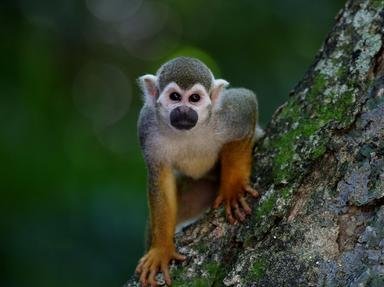Quiz Answer Key and Fun Facts
1. The aye-aye and all the other lemurs on Madagascar owe their existence to the breakaway of the island from the African part of the supercontinent Gondwanaland approximately 160 million years ago. Had the island still been attached 17-23 million years ago, they would have been wiped out by which animals?
2. The aye-aye has an adaptation that allows it to occupy a niche that is occupied elsewhere in the world by which creatures?
3. All of the human inhabitants of Madagascar regard the aye-aye as a lucky animal.
4. In 2009, viewers of BBC television got the chance to see the actor Stephen Fry cooing over an aye-aye with zoologist Mark Carwardine in the series 'Last Chance to See'. In which British author's footsteps was Stephen Fry walking?
5. Which great British naturalist, author, zoo-owner and conservationist wrote 'The Aye-aye and I'?
6. Where was the first aye-aye born in captivity in the Western hemisphere?
7. Given that the aye-aye has incisors that do not stop growing throughout its life, large ears and a bushy tail, what did the first Europeans to encounter it erroneously classify it as?
8. What do aye-ayes live in?
9. How many babies does an aye-aye have?
10. Which island in Baie d'Antongil, has a nature Reserve where you might be lucky enough to see an aye-aye?
Source: Author
Quiz_Beagle
This quiz was reviewed by FunTrivia editor
crisw before going online.
Any errors found in FunTrivia content are routinely corrected through our feedback system.

